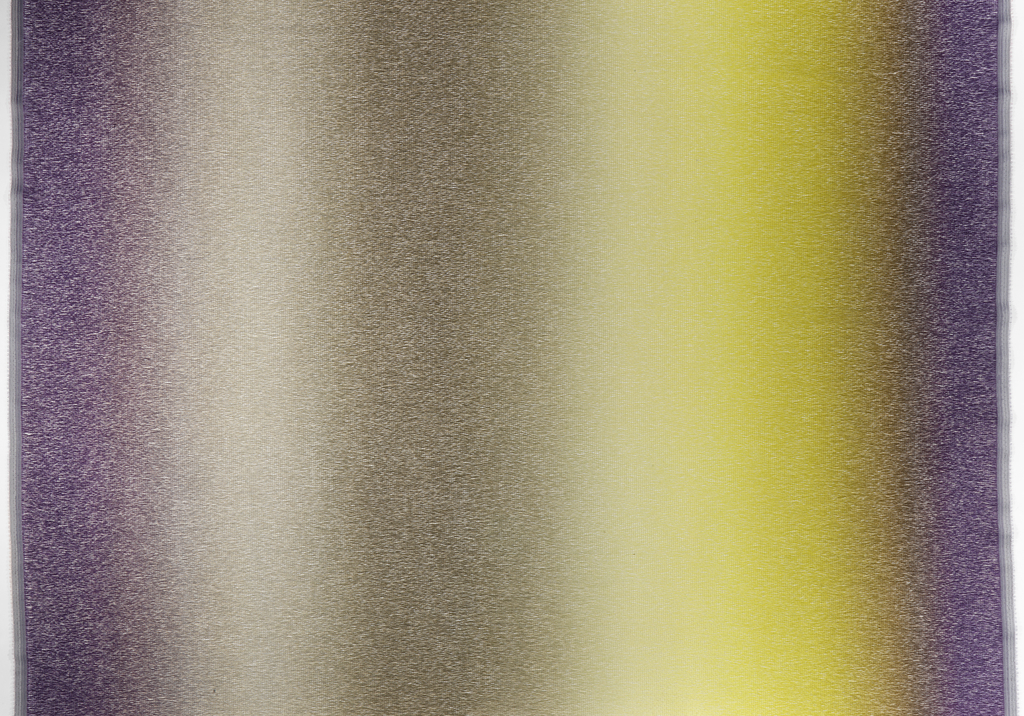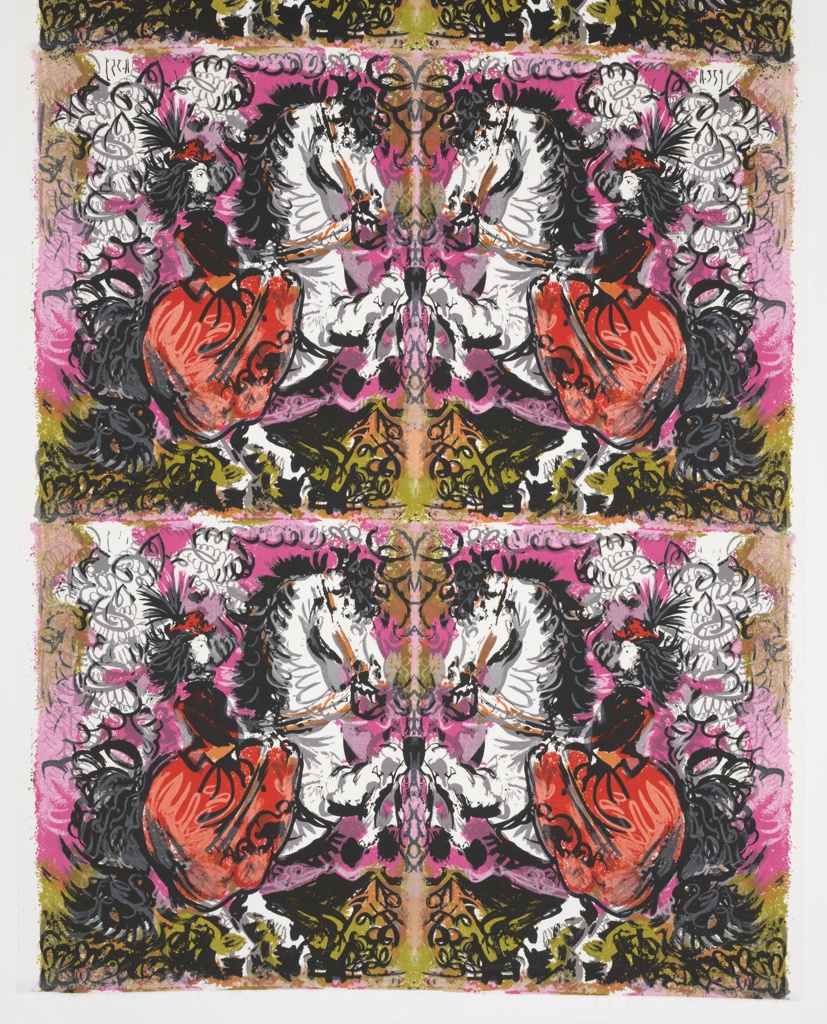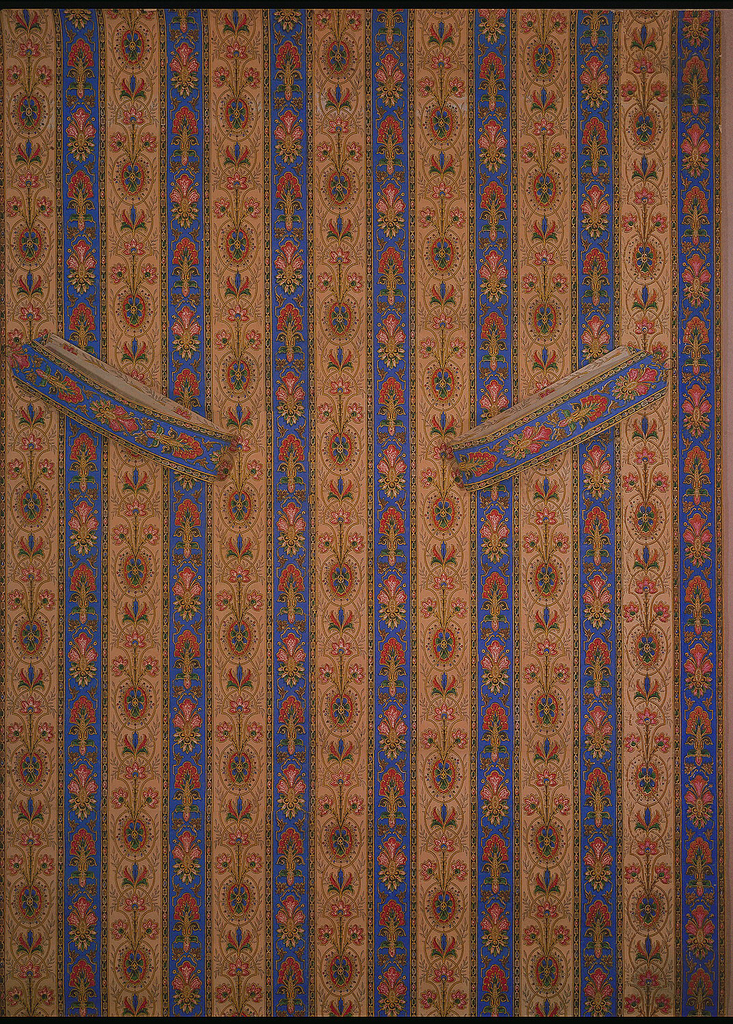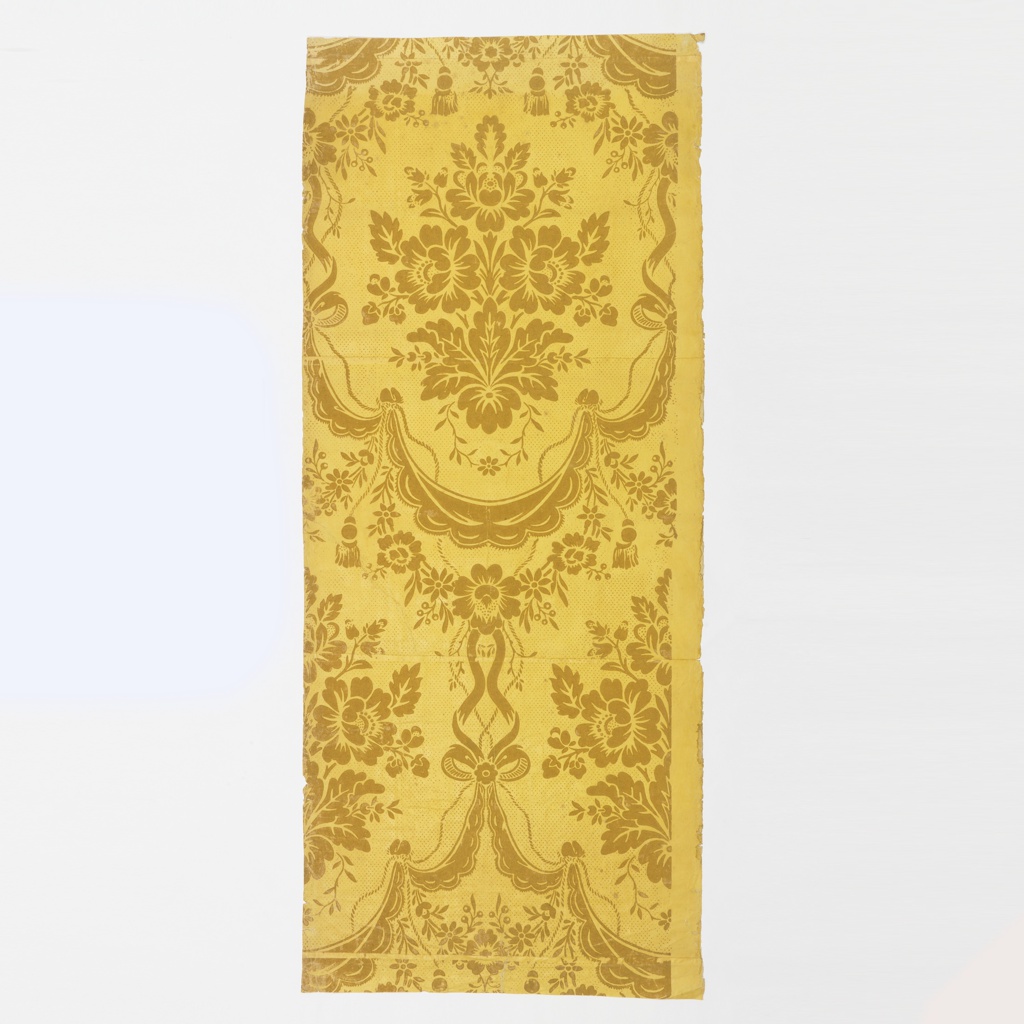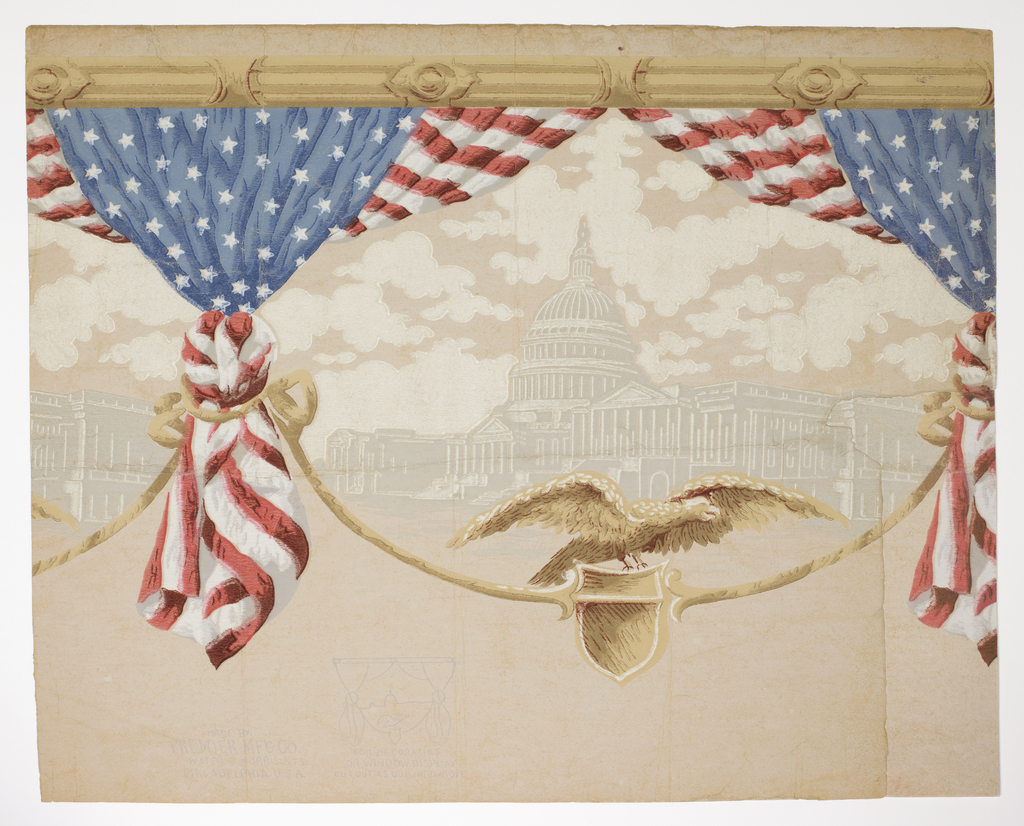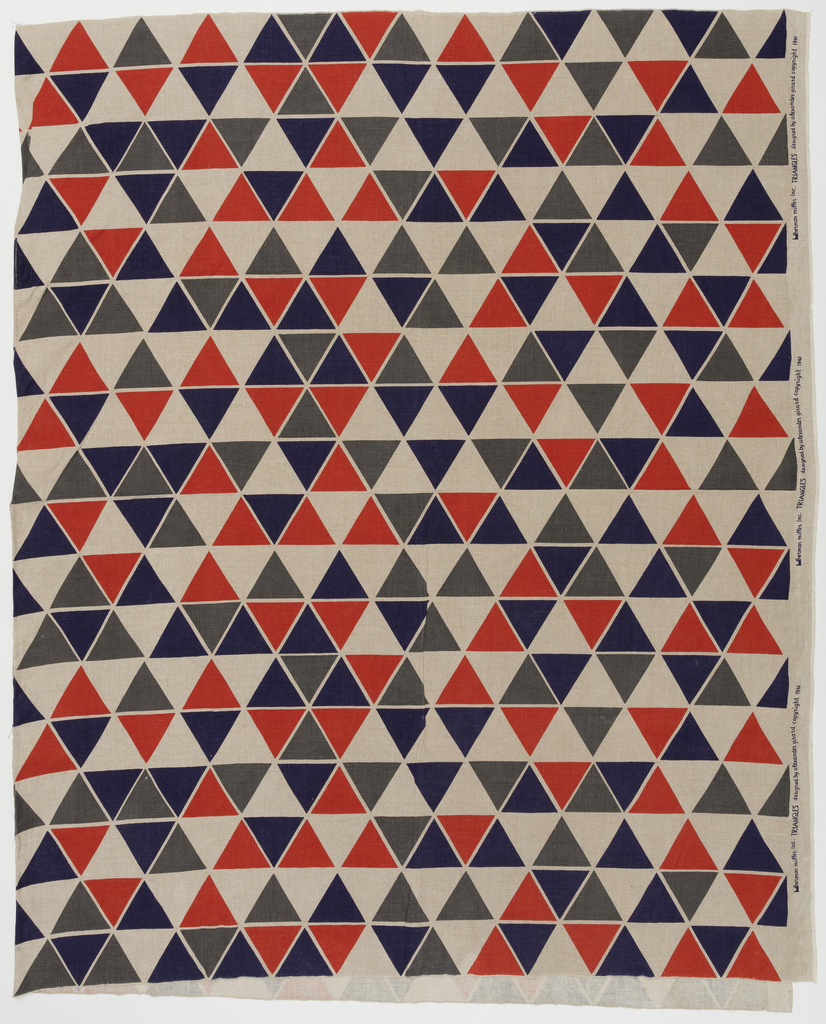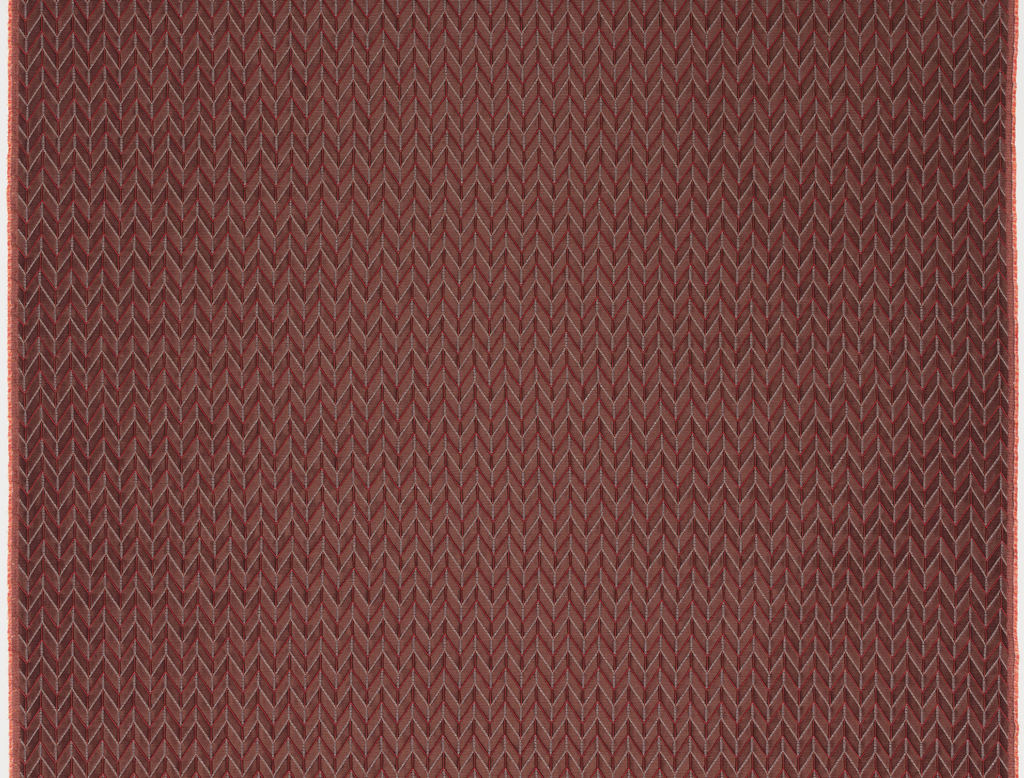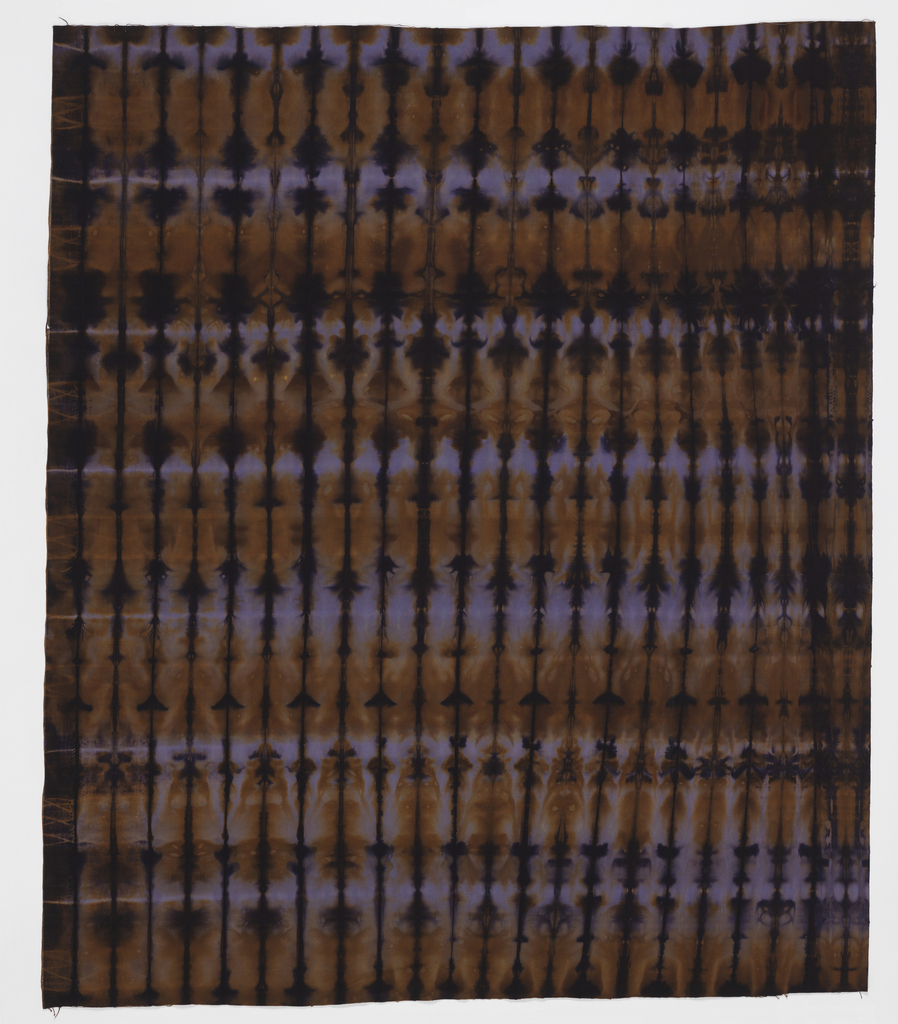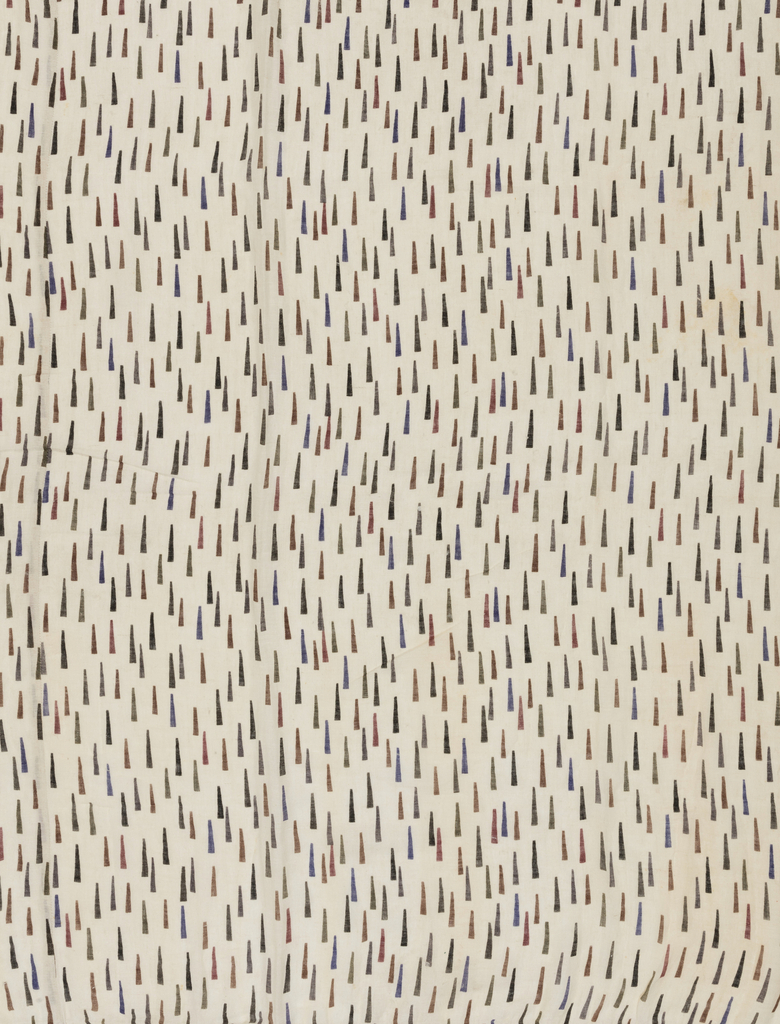Throughout March, Object of the Week celebrates Women’s History Month. Each Monday a new post will highlight women designers in the collection. Does capturing the malevolent and mysterious quality of Rodarte’s fashions in contract fabrics sound like the impossible brief? Then extra credit is due to this collaboration among former National Design Award winners Rodarte...
Bloomcraft Fabrics, a New York-based producer of woven textiles that collaborated with artists ranging from Rockwell Kent to Gloria Vanderbilt, released the Picasso Collection in 1963. As announced by an advertisement in American Fabrics: “This unusual collection links the work of the world’s greatest living painter and the world of interior design through a series...
I recently had the opportunity to look at the museum’s collection of curtain papers, a lesser known group in the Wallcoverings department. A visiting paper conservator from the UK’s National Trust was researching curtain papers and while in New York on a courier trip stopped by to see Cooper Hewitt’s examples. Not much is known...
During the 17th century, France and England, both major producers and exporters of wallpapers, were printing inexpensive decorative patterns on single sheets of paper. These were multi-use papers and were used for lining trunks and chests, as well as decorating walls. Outlines were printed by crude wood blocks and color was added by applying thin...
I thought while everyone is in the Fourth of July holiday mode it is a good time to write about a patriotic wallpaper, or rather a border. Since I’ve already written in years past about the firecracker wallpaper created for the American Bicentennial, and a scene from Views of the American War of Independence showing...
Alexander Girard (American, 1907–1993) was one of the leading American textile designers of the mid-century period, and was a strong proponent of bringing an affordable modernism to the middle class. Girard was the head of the Textile Division of Herman Miller Inc. from 1952 to 1973, where he worked alongside Charles and Ray Eames and...
In 2014 Designtex introduced the Origami Collection by Tobias Batrla, who designed two fabrics–Chiyogami and Kabuto–both inspired by traditional Japanese paper-folding. Recently added to the Textile collection is Chiyogami, also a term that describes the graphic patterns on origami paper that were originally printed with woodblocks. The chevron form in Chiyogami becomes three dimensional through...
The diversity of styles that characterizes Larsen’s range is the result of his insatiable intellectual curiosity about the world’s textile traditions. He wrote extensively about resist-dye techniques in The Dyer’s Art: Ikat, Batik, Plangi, including fold-dying, in which pleating or folding are combined with resists like clamping or binding to create complex geometric patterns with...
Alexander Girard was one of the most influential textile designers of the mid-century period. Along with colleagues Charles and Ray Eames, George Nelson, and Eero Saarinen, he was a strong proponent of bringing an affordable modernism to the middle class. From 1952 to 1973, Girard served as head of the Textile Division of Herman Miller...
